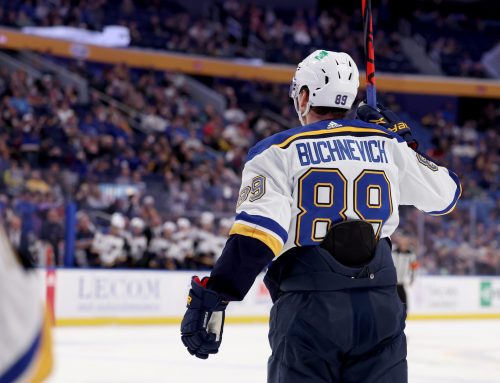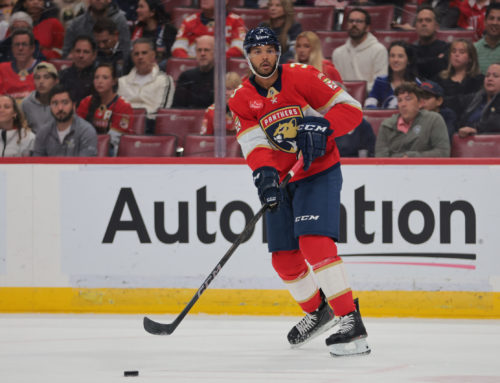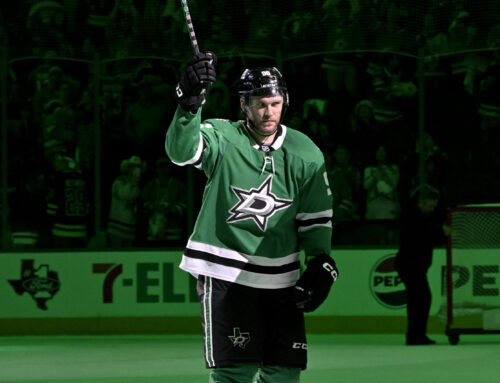
World Cup of Hockey, looking at a few more defencemen, and the impact of 3-on-3 overtime.
****
Remember, as always, I will have an open thread at the Dobber Forums for readers to pop in and ask any fantasy question that comes to mind. The thread will open around lunchtime (Eastern).
****
The biggest news of the day (it’s clearly early September) was the official press conference for the World Cup of Hockey. The eight-team tournament will take place from September 17, 2016 through October 1, 2016. Full details are available on the NHL website.
There are a few good things about this tournament that I can see:
- The final is a best-of-three, which I am completely in favour of. Sure, there are moments like the Golden Goal which are hard to replicate outside of a one-and-done, but I love a good series. I am too young to remember the ’87 Canada Cup, but the highlights of the games are enough to get me excited. What could be better than one overtime game? THREE overtime games.
- A chance for the young stars to shine. With Team North America (and as Scott Burnside of ESPN pointed out on Twitter, that team’s abbreviation is TNA, which I don’t think the NHL thought through), there is a chance to see younger stars that might not otherwise make their respective national rosters. Guys like Auston Matthews, Mitch Marner and (maybe) Aaron Ekblad might not crack USA/Canada, but fans will still get to watch them. My one gripe here is that they aren’t even eligible to play on their national team. Yes, watching Connor McDavid in an elite tournament filled with pros will be fun. What would be even better is watching him between Jamie Benn and Tyler Seguin. Fans are robbed of that opportunity. National rosters should be filled first, and then what is left is available for TNA (giggle).
My one huge complaint is there are not enough teams. I get the desire to pare down the teams to avoid blowouts, but a squad like Switzerland is capable of beating anyone in a given night. What about the nail-biter for Team Canada against Latvia at the Sochi Olympics? Other than a few rivalries, those upstart teams are what make tournaments interesting. Tommy Salo in 2002, anyone?
I only hope this doesn’t spell the end of NHL participation at the Winter Olympics. That is a true best-on-best tournament with the occasional absurd upset.
****
Like I usually do, I bounce a lot of ideas off Twitter. Yesterday I went on a bit of a mini-rant about what 3-on-3 overtime will mean for fantasy. There was a good read from Ryan Lambert of Yahoo earlier this summer talking about past 3-on-3 goal and save rates, and predicting future events. I recommend going through that.
For fantasy, I think this has to be a bit of a more wait-and-see approach. Sure, the stars like Sidney Crosby, Tyler Seguin, John Tavares and the like will get their fair share of ice time. Beyond the big stars though, there’s no real telling how it shakes out.
Part of it is that usage isn’t known. One example I provided on Twitter was Dallas. Do they go with a three forward unit with something like Seguin, Benn, and Jason Spezza? Or do they go with Seguin, Benn, and John Klingberg. The first scenario is greatly beneficial for Spezza, and the second for Klingberg. Also, if the second option is what occurs, then their second unit may be something like Spezza, Patrick Sharp, and Alex Goligoski. That obviously is a benefit to someone like Goligoski.
How teams use their players, deployment rather than strict ice time, I think will be the biggest impact. If the Penguins go with Crosby, Phil Kessel, and Evgeni Malkin, like Crosby alluded to, it helps those three for fantasy, but hurts someone like Kris Letang, and Olli Maatta even more.
As I mentioned, there won’t be much clarity for these situations until they actually occur outside of the obvious playerss, so bumping up secondary options like Goligoski, Patric Hornqvist, Radim Vrbata, and the like, isn’t prudent just yet.
****
I did want to mention the impending Cody Franson signing in Buffalo. I will have a more lengthy article on this later in the day, but I didn’t want to rush something before the deal is finalized. Like Oz’s lacrosse coach in American Pie warned, “You don’t score, until you score.”
****
Ryan McDonagh took a bit of a step back production-wise in 2014-2015 after putting up 43 points in 2013-2014. Oddly enough, the addition of Keith Yandle was not the reason. In the 21 games McDonagh played after the Yandle addition, he managed 10 points in 21 games (0.48 points/game). In the 50 games before Yandle, he managed 22 points in 50 games (0.44 points/game).
McDonagh, though, set a four-year low in points per 60 minutes at five-on-five at 0.69. He had been between 0.92 and 0.96 the previous three years. He also set a three-year low in shots per 60 minutes, and shot attempts per 60 minutes.
He did battle injuries last year, so maybe that is part of it. The drop in ice time probably factors in there as well. But one thing that gives me hope is Individual Points Percentage (IPP). That was something I talked about earlier this summer in these Ramblings, and from Hockey Analysis, it’s the percentage of goals that occur with a player on the ice on which he registers a point. Extremes tend to regress, so guys at the top and bottom, barring extraneous circumstances like age/skills decline, tend to rebound after a bad year. Last year, McDonagh managed a point on 24.1-percent of goals scored at five-on-five with him on the ice (almost all of it a decline in assist percentage). He had never been below 38.1-percent in the previous three years, with a high of 40.3-percent. He is only 26 years old, so it’s not a skills/age thing. He is also not factored out of the offence on that team. It seems to be genuinely bad luck, and that indicates an incoming rebound.
McDonagh was on the ice for 58 Rangers five-on-five goals last year. Had he been around the 40-percent mark like he had for most of his career, he would have had 23 five-on-five points. Rather, he had 14. Those extra nine points is the difference between a good fantasy year and a bad one (relatively speaking).
The Rangers are still a good team, McDonagh is still young, and it doesn’t seem like more than bad luck. I think he stands a really good chance of cracking 40 points again in a healthy season with good peripherals, which could put him at the fringe of being a top-15 defenceman. In other words, I don’t think there’s a good chance of losing value on him if he’s drafted as a second defenceman.
****
One defensive situation that has me concerned a bit is the Carolina blue line. It is not that I don’t think James Wisniewski and Justin Faulk aren’t good. They are both very good. But is there a concern about cannibalizing points here?
I know Andrej Sekera is gone, so maybe Wisniewski just fills his slot, but now Carolina has two legitimate power play quarterbacks. Carolina won’t produce much offensively as it is, but if Wisniewski takes away some time from Faulk on the top power play unit, that could hurt Faulk’s production. I know Wisniewski isn’t a picture of health, but when he’s in the lineup, that is a concern.
Maybe this is all ado about nothing, and Faulk pushes for 50 points again. But with the expected scoring struggles, Faulk can’t afford to lose four or five power play points over the course of a season. That would make the margin for error in five-on-five production really small, and not something that is appealing given that team. It is something that is making me shy away from Faulk as a second defenceman in roto leagues, steering more towards a McDonagh-type.
Last year’s stats from Hockey Abstract. Year-over-year stats from Hockey Analysis.





 TOR
TOR FLA
FLA VGK
VGK EDM
EDM DAL
DAL MIN
MIN WPG
WPG CAR
CAR CBJ
CBJ BUF
BUF
